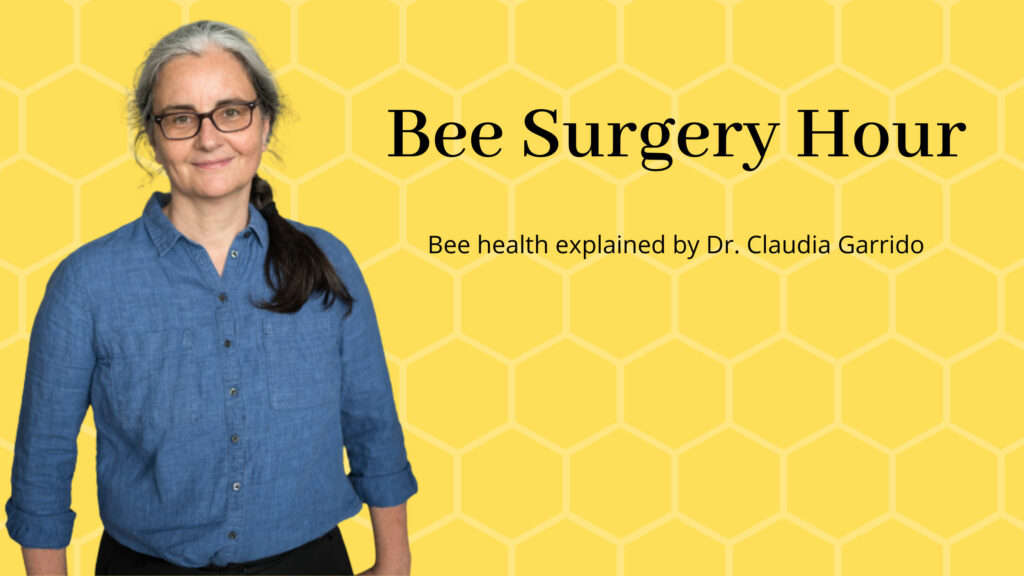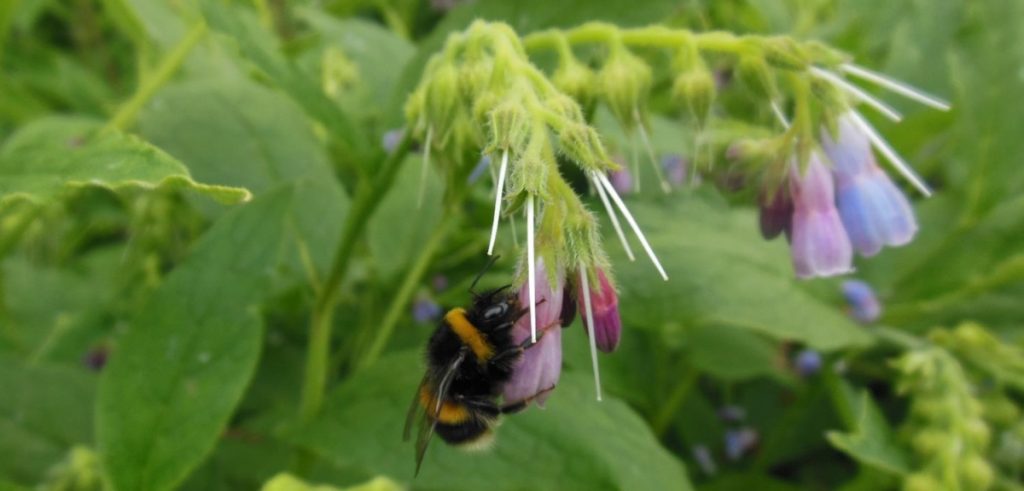From time to time I hear from a beekeeper: “Treatment xyz doesn’t work anymore!”. The thought behind this is the doom scenario of resistance against varroa treatments. Perhaps I shouldn’t call it a doom scenario; resistance is a real issue. But there are nuances and ways to avoid it.
But let’s start from the beginning.
How do varroa treatments work?
To know why something doesn’t work, it’s good to know how it does in the first place. Varroa treatments, or better: the active substances, intervene in the metabolism of the mites. For instance, amitraz affects specific neurological mechanisms. This causes trembling, cramps, and death to the mites. So, amitraz affects a very specific target.
Other substances affect the metabolism in a more general way. Oxalic acid acts via its acidity, i.e. probably intervenes in different mechanisms in the varroa metabolism. We still don’t know how exactly, though there’s some interesting research ongoing.
As a rule of thumb, one could say that synthetic varroacides are more specific, while active substances from natural origin have a more general effect. Keep this in mind, it’s important for understanding the risk of resistance against varroa treatments.
What does resistance mean?
If we now reverse what I explained on how varroacides work, there’s a clear indication of what “resistance” means in this context: that the active substance doesn’t have its specific effect anymore. But how can this happen?
There’s a bit of genetics involved in this. To break it down: the metabolic processes involve different proteins. These are produced according to a genetic “recipe”. This recipe, however, is… flexible so to speak. Mutations, i.e. small changes in the genetic code, change the protein that results from this. Mutations aren’t always bad as popculture may suggest. Sometimes, they result in something new and functional. Different proteins that still do the job, for example. Which, in this case, is good for the varroa mites, but not for the bee colonies. Always a matter of perspective.
When such mutations happen, the active substances can’t influence the metabolism of the mites in the same way they did before. This may be less or not at all. Varroa mites with this “advantage” reproduce, while those without it are killed by the treatment. In the end, the resistant mites take over and a treatment doesn’t work anymore. The underhand thing of such a development: Beekeepers think they’re doing things right and notice the problem only in the second or third year. When all varroa mites in the colony are resistant.
What favours resistance against varroa treatments?
There are several things that favour varroa mites getting resistant against treatments. First of all, the specificity of an active substance. It’s “easier” to change the genetic code of a single protein than to do the same thing for a series of different processes. For instance, resistance against fluvalinate apparently is caused only by a single mutation. Actually, resistance against fluvalinate is described in many regions. It’s especially tricky because this usually means that also the other pyrethroid, flumethrin, doesn’t work anymore. These two substances are very similar and apparently have the same target.
Amitraz, on the other hand, is a more complicated case. Notifications on resistance against this varroa treatment have been not as clear. Very often, the most probable cause was wrong use (more on that later). However, recent research shows that in this case mutations in two different genes may be responsible for resistance. If these have to occur at the same time, this would explain why the situation has often been so ambiguous.
In case of the active substances it’s even more difficult to “create” resistance. For example, oxalic acid as I said acts by its acidity. The pH (i.e. acid or basic conditions*) plays a role in a multitude of metabolic processes of varroa mites and all living beings. When this gets out of balance, these processes don’t function. Usually with bad consequences. So, if there’s a mutation that helps the varroa mite to have one metabolic process work also in more sour conditions, there will be many others where this still isn’t the case. Especially, as most processes involve many different proteins/genes.
What else favours resistance?
Bad practices are the most common cause for resistance against varroa treatments. When the first strip treatments came up, many beekeepers thought they were too expensive. They only used half the dose for longer time. Assuming that this would compensate for the lower dose. It didn’t. This practice is responsible for “destroying” the efficacy of fluvalinate and flumethrine in many regions very quickly. We know about resistance against these treatments already since the late 1990s.
Another bad practice are homemade “products”. With the same argument (“too expensive”) beekeepers bought the prime materials and applied them to cardboard or other absorbent materials. Without caring much about the dose, so it could be too much or too little. This is why I talked about the rules for varroa treatments in a previous post of this series. So, think of what’s more expensive – the treatment or losing colonies…
Varroa treatment schemes – how to avoid resistance
Finally, another thing favouring resistance: always using the same substance. This increases the probability that by chance a few varroa mites deal better with a certain active substance than others. Let’s say, they get sick but don’t die. In consequence, they will reproduce with more success than those who… well, die and can’t anymore. Meaning that after a while you have only those who get sick but don’t die. And continue to damage the colonies.
Here’s where treatment schemes come in. On the label, you’ll often find the sentence “Use as part of an integrated treatment scheme”. Sometimes also clearly stating to rotate treatments, i.e. not using the same substance for two consecutive ones. In some regions, the authorities tried to coordinate the treatments indicating which to use and when to treat. Despite this being an excellent idea, it fails because not all beekeepers follow indications. Despite following the recommendations definitely pays off, some always think they know better…
It works a bit better if associations try to do the same thing. Then it’s an “us” thing, not “them” (authorities, scientists, vets). Independently of whom organizes the rotation, it definitely helps to prevent resistance against varroa treatments. With the added bonus that it also prevents reinvasions. But that’s for next time. In any case, do treatments according to the label. Thus avoiding all the things that favour resistance.
I know, this time it may have been a bit complicated. If you have any questions, please comment below, I’ll do my best to answer all of it. To colleagues: I know that I left out a lot of things. For the sake of making things accessible and limited to the details that matter in practice. You can explain in more detail in the comments if you like (or correct me, of course).

*On a side note: This is the “foundation” for a common scam in human nutrition. Certain foods (sugar, most often) are said to “acidify” your organism. That’s nonsense. If it was the case, you would be an emergency in hospital. Which doesn’t mean that too much sugar is good for you. But also doesn’t mean that you have to buy supplements. Talk to a nutritionist if you have problems in this area.



